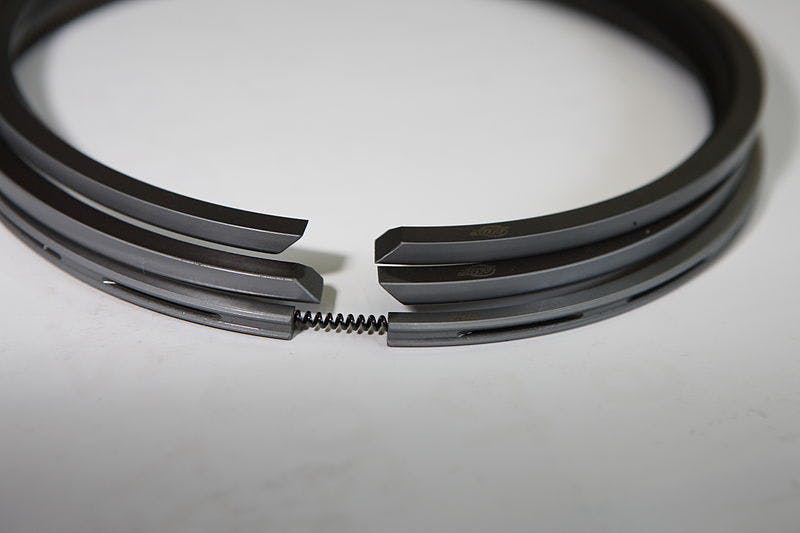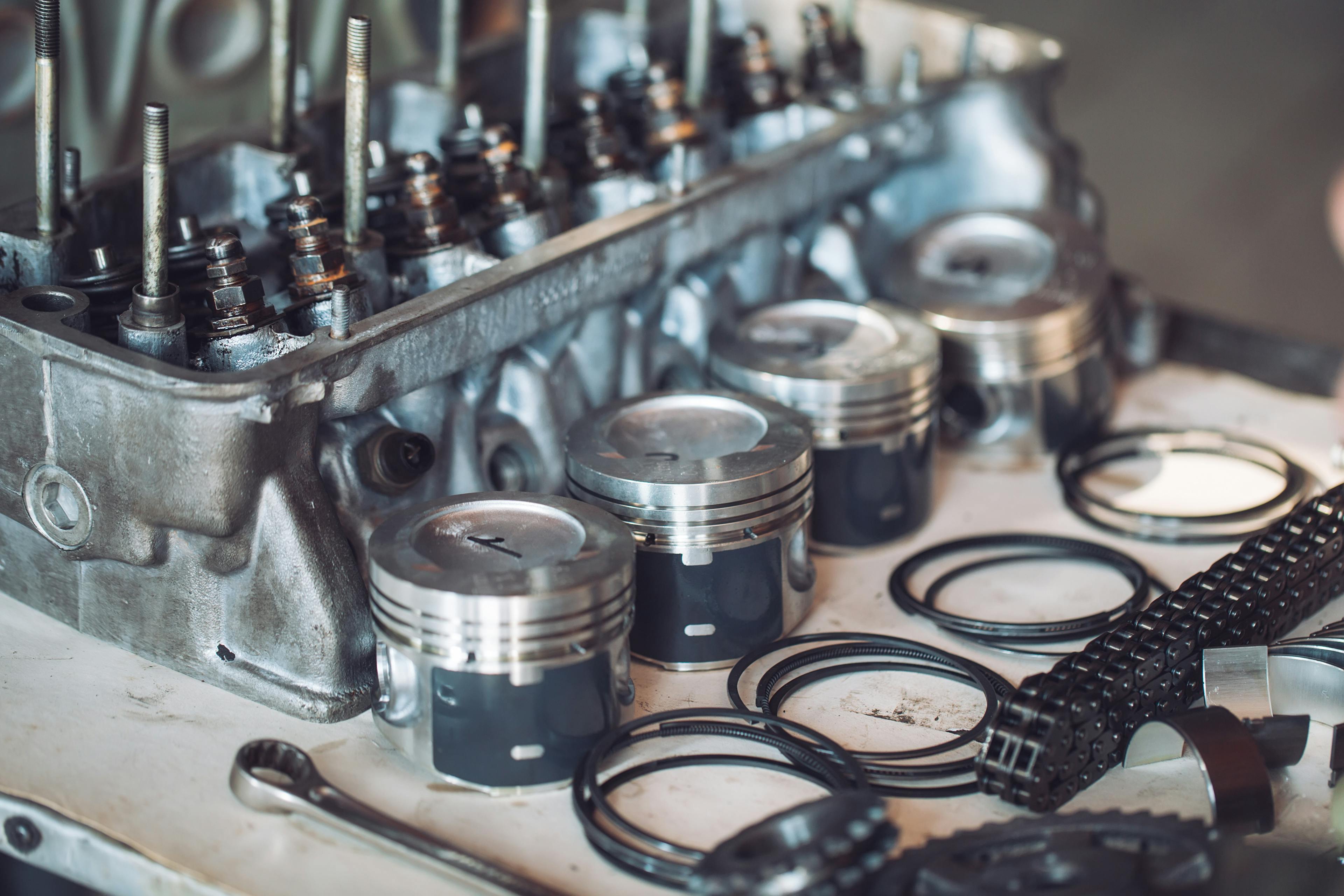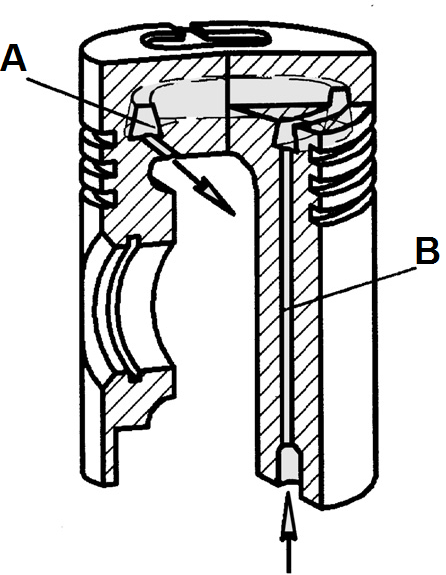Piston Rings: What are their function and types?

Piston rings are part of a piston combustion engine and separate the combustion chamber from the crankcase. In addition, they also serve to define the clearance between the piston and the cylinder.
In this article, we'll take a quick look at the function of piston rings, their breakdown, and what a worn piston ring can cause.
Inhaltsverzeichnis
Construction of Piston Rings
The piston rings are located in the grooves on the piston wall. These rings are made of hard high alloy steel. Alloy steel is created by adding other metals like nickel, chromium, vanadium, silicon, molybdenum, etc. This steel can be categorized into low-alloy and high-alloy steel.
Piston rings are metal rings that are interrupted at one point. The place where the piston ring is split is called the piston ring lock. The piston ring lock expands the ring when inserted into the piston groove.
By inspecting the piston ring lock, you can also detect the wear of the piston rings. In the case of a new piston ring, the lock gap disappears when it fits into the piston groove, but with worn rings, a small gap remains in the place of the lock.
Types of Piston Rings

Usually, two to three-piston rings are mounted on one piston. The top two rings (only the first one in case the piston has only two rings) seal the combustion chamber by pressing against the cylinder wall. These rings are known as compression rings.

Engine Pistons: How do they work?
The bottom ring, known as the oil control ring, has three functions: control the engine oil supply to the cylinder, lubricate the piston skirt, and keep the excess oil out of the combustion chamber.
1. Compression Piston Ring
There must be clearance between the piston and the combustion engine's cylinder precisely because of the thermal expansion of the material from which the piston is made. It means the piston is smaller than the cylinder by a few hundredths of millimeters, which is why it can move so easily in the cylinder.
Two compression rings are placed on the piston for better sealing of the combustion chamber from the crankcase space. The compression piston ring defines the clearance between the piston and the cylinder, thus ensuring the combustion chamber's tightness. The penetration of exhaust fumes into the crankcase space would harm the quality of the engine oil.
2. Oil Control Piston Ring
The piston skirt is lubricated with oil through oil channels in the connecting rod and piston. The function of the oil control piston ring is to sweep this oil away from the surface of the cylinder as the piston performs its downward motion.

Engine Oil Classification Explained
Oil in the combustion chamber is undesirable during combustion, as it increases emissions and engine smoke but can also damage the catalytic converter. For this reason, the groove for the oil control ring has holes through which the excess wiped oil drains into the space under the piston.

Conclusion
Piston rings are stressed thermally but also by friction because they are constantly in contact with the cylinder wall. This friction causes the piston ring material to wear down. A worn ring has large clearances and loses its sealing and wiping capabilities.
A worn piston ring also causes excessive oil consumption but can crack due to the load. A cracked piston ring can do a lot of damage, it can scratch the cylinder wall, which you would have to grind out, and its fragments can get into the crankcase and to the engine oil.